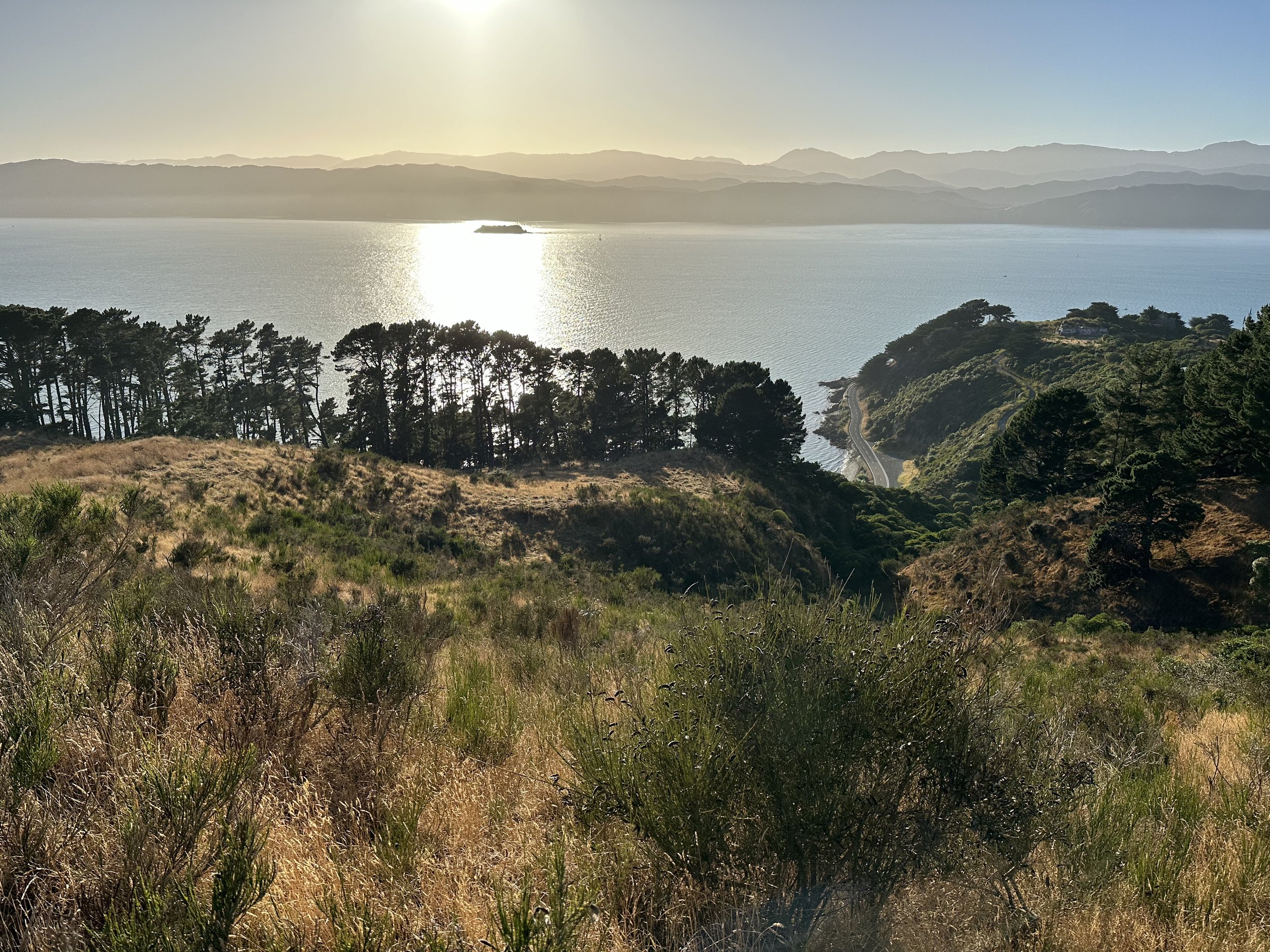A Community Vision for
Te Motu Kairangi /
Miramar Peninsula
covering
Mātai Moana/Mt Crawford - Marukaikuru/Shelly Bay - Watts Peninsula
The vision
“A treasured place for restoration, living heritage and histories, where all people can connect with one another and with the unique nature, landscapes and wairua of Aotearoa New Zealand.”
Background
Wellington/Te Whanganui-a-Tara is a beautiful and captivating city. Much of its beauty is based on its harbour, hills and regenerating native forest. Over the past three decades the nation’s capital has been on a journey to become a world-leading environmental restoration city, enhanced by the immediate access it offers to nature. This is the result of deliberate decisions and actions: extensive land protection; natural and assisted revegetation; predator control supported by large-scale active community involvement; and a world-first fenced urban wildlife sanctuary.
Thirty-five years ago Wellington had three prospective jewels in the crown – places that had been locked away from public access for generations. Committed citizen involvement and leadership was, and continues to be, a critical part of transforming the first two – the Wellington waterfront and Zealandia bird sanctuary – into much-loved places that have added enormous value socially, environmentally, culturally and economically to the city.
The northern, presently undeveloped end of Te Motu Kairangi/Miramar Peninsula has the potential to be the third jewel. Comprising land currently held mainly in government ownership, it is visually prominent, situated in the centre of the Great Harbour of Tara. It has historic and cultural significance as one of the sites of earliest settlement in Aotearoa and offers opportunities for numerous recreational, educational, cultural and tourism activities. Successfully cleared of predators, it can become a Zealandia without fences.
Thirty-five years ago Wellington had three prospective jewels in the crown – places that had been locked away from public access for generations. Committed citizen involvement and leadership was, and continues to be, a critical part of transforming the first two – the Wellington waterfront and Zealandia bird sanctuary – into much-loved places that have added enormous value socially, environmentally, culturally and economically to the city.
This paper sets out a path towards a shared vision for this land. At the same time, it acknowledges that:
part of the land at Shelly Bay is owned by Peter Jackson and Fran Walsh and part by the Wellington City Council;
Mau Whenua has pending a court action challenging the original sale of the Shelly Bay land by Port Nicholson Block Settlement Trust to The Wellington Company;
while the land on Watts Peninsula and Mātai Moana is currently owned by the Crown and managed by Land Information New Zealand, Taranaki Whānui has a Right of First Refusal should the Government propose to sell the land.

